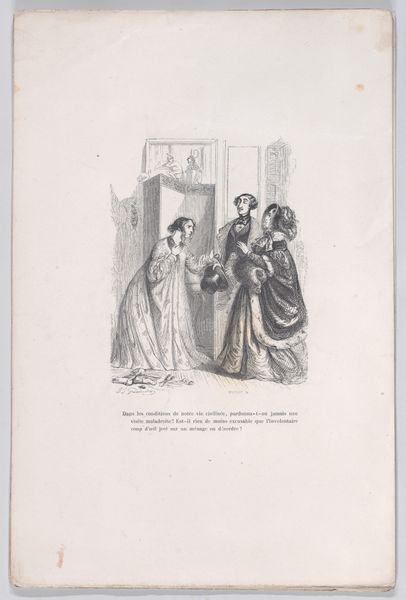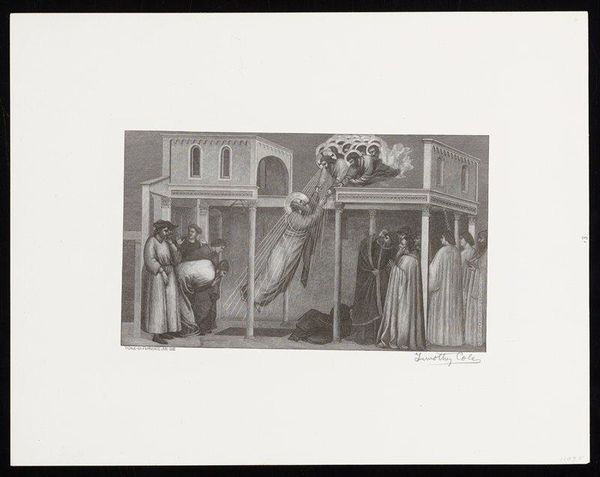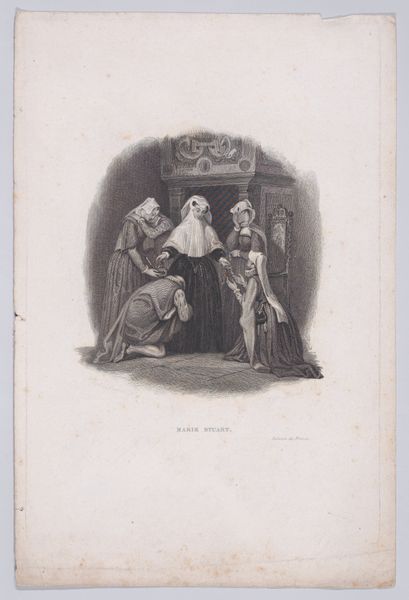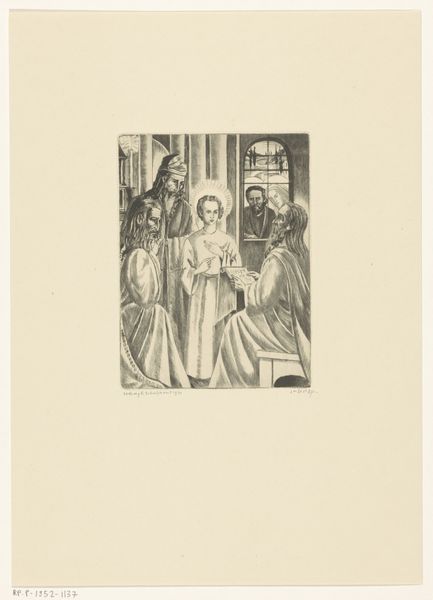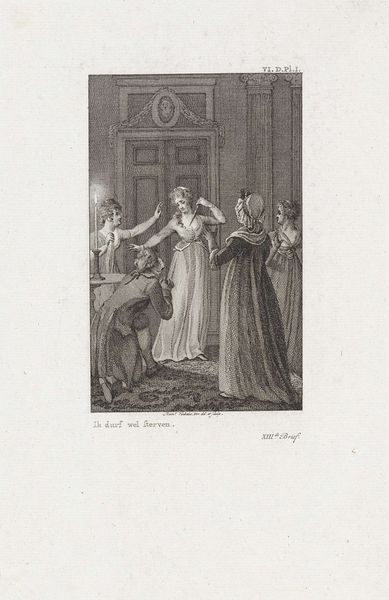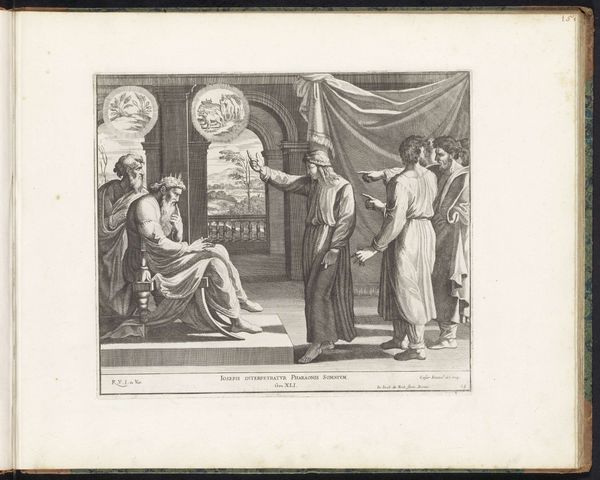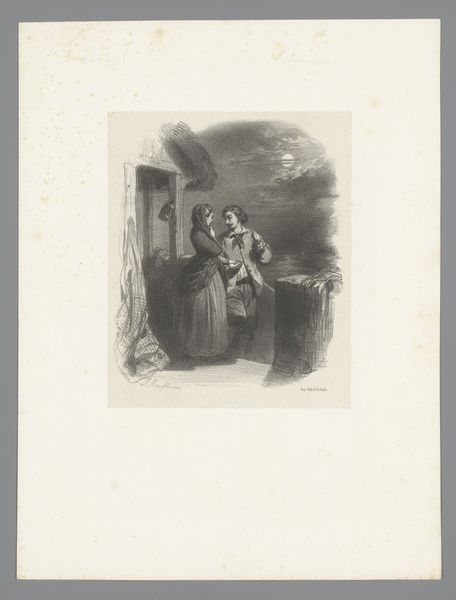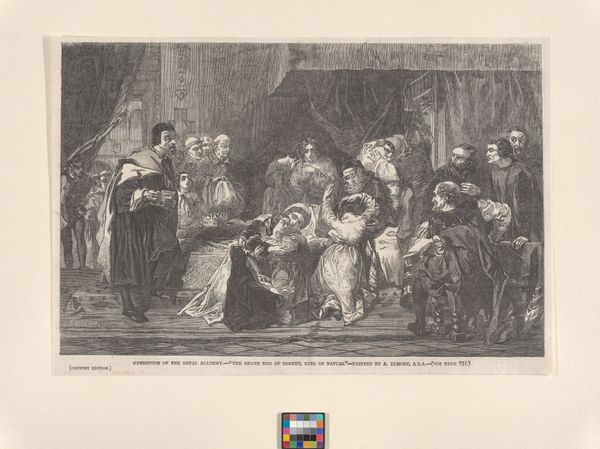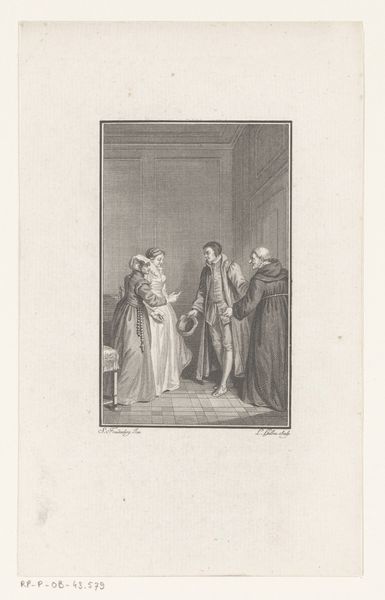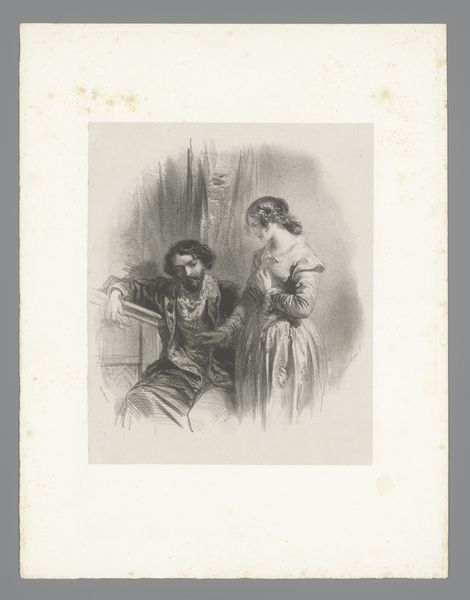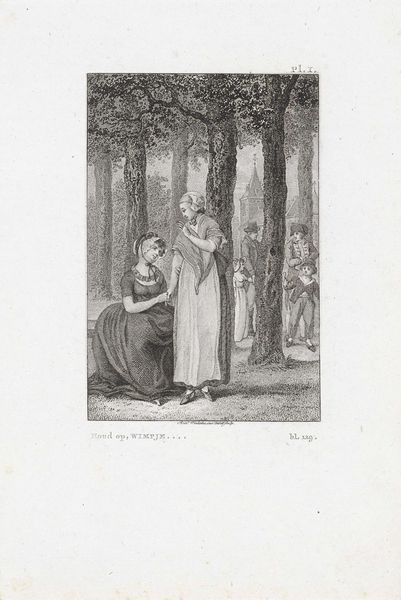
print, wood-engraving
#
negative space
# print
#
junji ito style
#
centered composition
#
lack of negative space
#
linocut print
#
optical illusion
#
gestalt
#
pop art-influence
#
united-states
#
a lot negative space
#
remaining negative space
#
wood-engraving
Dimensions: 6 1/4 x 5 3/16 in. (15.88 x 13.18 cm) (image)12 3/16 x 9 1/2 in. (30.96 x 24.13 cm) (sheet)
Copyright: No Copyright - United States
Timothy Cole made this engraving, Mary and Elizabeth, after an Italian Renaissance painting. The meeting of Mary and Elizabeth is a key moment in the Gospels. Cole was one of a group of American engravers who spent time in Europe in the late nineteenth century, copying 'old master' paintings, mostly for reproduction in popular magazines. Engraving, like photography, played a vital role in the history of image distribution, before the dominance of digital media. Here, the artist acts as a servant of the institutions, creating an accessible version of a revered painting and enabling middle-class Americans to engage with European culture. We might ask, how does the role of the engraver shape our view of the original artwork? Scholarly resources can help us to understand the ways in which social context determines the meaning and status of images.
Comments
No comments
Be the first to comment and join the conversation on the ultimate creative platform.
